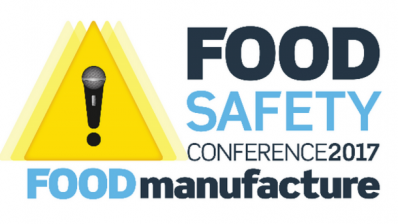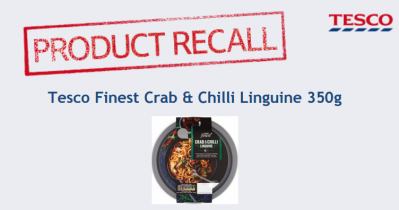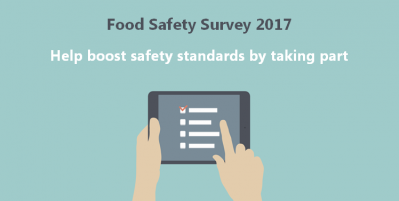Safety conference
Food recalls, supplier audits and fraud feature at conference

Cadbury’s salmonella contamination in chocolate product recall, in 2006, is often used by risk management experts as a case study and example of how not to handle a food safety response.
This breach of food safety controls ended up costing the company, now part of US group Mondelz, a whopping £20M-plus – £7M of which was not covered by product recall insurance, it has emerged.
The confectionery manufacturer was prosecuted for failing to prevent contamination at its Marlbrook chocolate crumb factory in Herefordshire.
However, the damage caused was not just in the costs Cadbury incurred, but also to its reputation at the time. The situation was made worse by its failure to be open about what had led to the breakdown in food safety controls and procedures.
Speaking to Food Manufacture in 2008, a year after Cadbury was prosecuted and fined £1M for incidents that caused the product recall, Nick Lowe, food safety team leader for Birmingham City Council, the local authority involved in prosecuting the company, said we would probably never discover why Cadbury had switched from a zero tolerance approach to assuming it was possible to have ‘safe’ levels of salmonella in chocolate.
“There are still a lot of unanswered questions surrounding this case,” said Lowe. “But for me, the biggest is why, in 2003, did Cadbury switch from a zero tolerance approach to a regime that assumed there was a ‘safe’ threshold for salmonella?”
What this affair graphically illustrates was a lack of transparency by Cadbury and a reluctance to be open about the procedural failures that caused it to happen.
Consequently, some 10 years later, it is still being cited by risk managers as an example of how not to do things.
Both Dominic Watkins, a partner with legal firm DWF and Jeff Hosking, head of major damage claims with business insurer RSA, raised the Cadbury case at Food Manufacture’s 2016 food safety conference ‘Boosting consumer confidence in times of change’, which was held in London last month (October 13).
The one-day conference, sponsored by Appetite Learning, Glass Technology Services (GTS), Sealed Air, test and measurement equipment supplier Testo and the University of Greenwich, was chaired by Professor Colin Dennis, immediate past president of the US Institute of Food Technologists and, for many years, director general of Campden BRI.
Hosking said the importance placed on brand and reputation should never be underestimated. But, he added, standard insurance liability policies would not cover the cost of recovering reputation following an incident.
“I was intrigued that Dominic used the Cadbury’s reference,” said Hosking. “It just underlines what a hangover you can get from an incident… If you ask most people in insurance ‘give me an example of a recall that went really badly wrong’, they will say Cadbury and the Salmonella Montevideo incident.
“Why is that such a big issue? Well, one it cost them between £20M and £30M; there was a £1M fine, which Dominic has mentioned.
“I would venture that would be significantly higher were they to repeat that performance today – but, most importantly, £7M of the costs that they incurred were not covered by insurance.”
Hosking added: “Cadbury is still used as an example. Part of the reason is because – if we are being generous to them – they hid the fact they had a problem.
“They didn’t believe it was possible actually to get salmonella in chocolate – that was their fundamental flaw … and the big issue was their unwillingness to face up to the problem at the outset, and it is why they have become the perfect case study in how not to do a recall.”
As well as describing the need for greater transparency and openness with the public – including not being afraid to say sorry when you get it wrong – when companies are managing a crisis such as a food safety recall, DWF’s Watkins also suggested that a positive and quick response to help the victims of incidents were also important in limiting damage to reputation, when firms recognised they were clearly at fault.
Social media (Back to top)
Watkins said the days of ‘no comment’ in response to media inquiries about food safety incidents were no longer acceptable. He added, that with the growing popularity of social media, it was also critical to manage this channel of communication too.
“Most stories will break on social media before they break on any other media, which means that unless you have a connected social media response and you are responding in times measured in minutes and hours rather than days, then you are going to be losing control of your story,” Watkins warned.
“You lose control of your brand and reputation and others will be filling that vacuum.”
Watkins also explained how new sentencing guidelines in the British courts meant that penalties and fines for those found guilty of getting it wrong were now far heavier than they were just a few years ago. “This is a sea change on what went before,” he claimed.
While, to date, there had been virtually no food manufacturing cases sentenced under the new guidelines, Watkins implied that it was only a matter of time before something hit the headlines.
“I think things may not be that rosy,” he warned, adding that prevention was better than dealing with the adverse results of a major food safety incident.
“Focus investment on auditing, either by yourselves or third parties, in order to ensure key risks are managed,” said Watkins.
“The chances are we know where the issues are going to come from, we know where it is going to affect us, but we just haven’t yet been able to prevent it. It’s much cheaper than paying a fine.”
Damage limitation from recalls was also a theme picked up by Dr Vince Shiers, md of crisis management firm RQA.
“Recalls can happen, but how companies manage them will have an impact on their longer term recovery,” he told the conference. But he warned: “People lose confidence in companies that have multiple recalls.”
Shiers echoed the comments of other speakers in what makes product recall damage even worse.
This includes unclear direction from senior management within companies; secrecy and lack of responsiveness; and, probably the most important of all, not making consumer safety the main priority.
Like Watkins, who warned against incriminating internal communications, such as emails, which could be disclosed if cases went to court, Shiers also highlighted the danger of “off the record comments” by unauthorised employees or those without knowledge of what was actually going on in response to incidents.
Supplier audits (Back to top)
Building on Watkins’ comments about the importance of audits to detect problems before they become a crisis, food safety guru Neil Griffiths, retail services director in the UK with SGS (formerly SVA), described a changing world in which unannounced audits of suppliers by retailers were becoming far more prevalent.
“It would be good if the whole of the industry could trust one another; if we could believe that the ingredients supplied were exactly what it said in the contract,” said Griffiths.
“But everybody knows that is why we are auditing, because there isn’t that level of trust and there are so many pressures in the system at the moment.”
Testing, evaluating, inspecting and the monitoring of complaints are some of the primary ways you can demonstrate that a system is working or not, said Griffiths.
But he feared the food and drink industry was now reverting to the situation that existed before retailer-led, third-party hygiene audits – such as the British Retail Consortium (BRC) Global standard and other standards under the Global Food Safety Initiative – were introduced in an attempt to make audits more consistent and reduce the burden of multiple audits on suppliers by different retailers.
“I happen to think that has moved on again, because if I was to talk to anyone in manufacturing, they will tell you that they are now facing lots and lots more audits,” said Griffiths.
“We are almost moving back to a situation of 20 years’ ago – of having loads more audits.”
From a legal perspective, Griffiths suggested that unannounced audits were “a darn sight more powerful” in exposing what really goes on in food factories.
“Common sense would say that unannounced audits – rather than being told five days in advance so that you can put things right – would be seen by a court to be much stronger.”
He went on to discuss the widening role of audits these days. Following the 2013 horsemeat scandal, audits were now increasingly being used as a way of detecting fraud, said Griffiths.
“Traceability auditing is just as important in [detecting] fraud as it is in animal welfare,” remarked Griffiths. “Interestingly, the concept of testing as a part of auditing is also currently being explored as well.”
He said that analysing the ingredients that went into food was much easier and cheaper than trying to determine them in more complex end products. He used the example of mechanically recovered meat to support this argument.
“Also, we are seeing retailers doing their own auditing – sometimes very risk based – and it’s interesting that that is the way enforcement authorities are potentially going in terms of risk assessing the audits that they do.”
Similarly, he added, manufacturers were beginning to audit their ingredients suppliers as part of their own risk assessments.
“But, I’m detecting a degree of ‘can we be totally reliant on the third-party auditing that we are doing? And do we need to do more? which is then leading to multiple audits,” Griffiths said.
He suggested that one way of relieving this burden might be to move to a more modular approach.
“The BRC, I know, is developing a more modular approach,” said Griffiths. “You can add a module to the certification that you have, so ultimately you only have an auditor coming out to you once, rather multiple elements.”
Food fraud (Back to top)
Much of the first session of the conference, ‘Ensuring safe and secure food supply chains’, was devoted to identifying and reducing incidents of food and drink fraud.
Professor Lisa Jack, from the University of Portsmouth, explained how forensic accounting and auditing could be used as an effective tool in detecting supply chain malpractices that might otherwise go unnoticed.
Where there is illegal activity, it is almost inevitable that a financial trail will be left which, with the right skill and training, can be picked up, she said. “You also need to understand the vulnerable points in the system and you need to know what paperwork needs to be changed.”
While those committing fraud might believe they are safe and won’t be spotted because of the huge amount of paperwork involved, Jack reported there were ways – including new computer analysis techniques – of identifying discrepancies. “Something, somewhere will have to be altered,” she explained.
She added: “If you focus on making yourself resilient to food fraud, then you are probably doing a good job in making yourself resilient to other types of fraud.
“And conversely, if you are not looking for these generally, then you are probably not looking for signs that your product as well is under threat.”
Low-margin food target (Back to top)
While the focus of attention of those charged with spotting food and drink fraud might be on higher value items, such as well-known alcohol brands, the reality is that opportunities exist in many other areas, warned Jack.
She reported that even low-margin foods offered opportunities for the criminally inclined to “cream off” small sums on high volume products.
For a company facing financial difficulties, for example, it could offer the prospect of survival, which might be tempting, she argued.
In a project for the Food Standards Agency, Jack had tried to identify foods for which it wasn’t worth defrauding.
“When I came up with frauds for potatoes and oats, I came to the conclusion that I couldn’t find anything,” she said.
“If you can sell it in high enough volumes – even if you are making a fraction of a penny more – you are going to make at least enough to go on a good holiday, and that may be what you are looking for.”
Jack advised companies to make greater use of forensic accounting tools to identify food fraud that might be taking place within their businesses, especially those that relied upon certificates of assurance from suppliers and others.
“If you do counter fraud or forensic accounting – apart from the fact that you are naturally sceptical people – a certificate is where you start looking, not where you end looking.”
Similarly, she argued, those within companies most tempted to carry out fraud were staff that had been with a company a long time, not – as most of us might think – the newer ones.
“I hate to tell you, but if you look at the research and statistics, most frauds are carried out by people who are long-standing and were trusted.”















